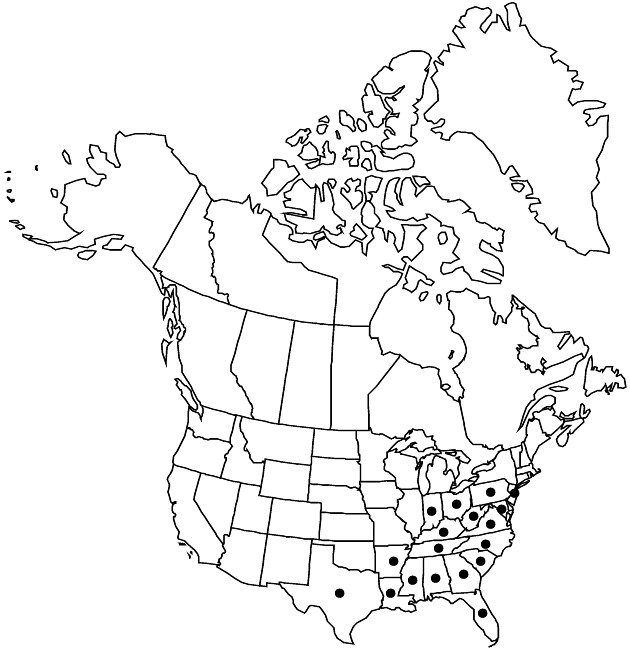Difference between revisions of "Brickellia eupatorioides var. eupatorioides"
Endemic
Synonyms: Kuhnia glutinosa Elliott
Treatment appears in FNA Volume 21. Treatment on page 498.
imported>Volume Importer |
imported>Volume Importer |
||
| Line 49: | Line 49: | ||
|publication year= | |publication year= | ||
|special status=Endemic | |special status=Endemic | ||
| − | |source xml=https:// | + | |source xml=https://bitbucket.org/aafc-mbb/fna-data-curation/src/2e0870ddd59836b60bcf96646a41e87ea5a5943a/coarse_grained_fna_xml/V19-20-21/V21_1256.xml |
|tribe=Asteraceae tribe Eupatorieae | |tribe=Asteraceae tribe Eupatorieae | ||
|genus=Brickellia | |genus=Brickellia | ||
Latest revision as of 20:09, 5 November 2020
Plants 30–150 cm. Leaves opposite; petioles 1–10 mm; blades 1- or 3-nerved from bases, broadly rhombic-lanceolate to narrowly lanceolate, 25–100 × 5–40 mm, margins entire or ± dentate. Heads in corymbiform arrays. Peduncles 5–20 mm. Involucres 7–11 mm. Phyllaries green to stramineous, sometimes purple-tinged (lengths of outer to 1/2 inner, apices acute to acuminate, not contorted). Florets 6–15; corollas pale yellow to maroon, 4.5–6 mm. Cypselae 4–5.5 mm. 2n = 18.
Phenology: Flowering May–Oct.
Habitat: Open areas, wide range of soils
Elevation: 200–2300 m
Distribution

Ala., Ark., Fla., Ga., Ind., Ky., La., Md., Miss., N.J., N.C., Ohio, Pa., S.C., Tenn., Tex., Va., W.Va.
Discussion
Selected References
None.
Lower Taxa
None.